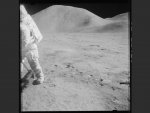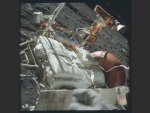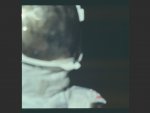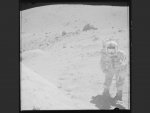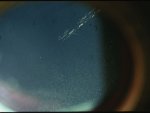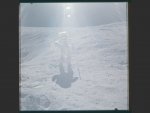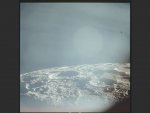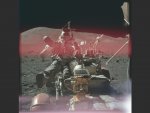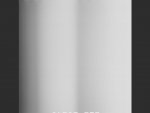I didn't ignore the other two photos, I just didn't have anything to say about them

Those two photos are from the Apollo 17 mission (as is the "I'm shaving... in space" photo) and according to the captions they were taken with a 35mm camera, not the 70mm Hasselblad that were used on the surface. I can't find any details of what type of 35mm camera it is, so cannot comment on its capabilities.
The problem of capturing the stars in a photo taken on the Moon is that, during the lunar day, the ground is extremely bright and the sky is extremely black. This is very difficult for the camera to cope with. With the aperture open wide, if any part of the lit lunar surface is visible the whole picture will be washed out. You could get around this by pointing the camera straight up, but there are a couple of issues with this: firstly, the lunar surface would not be visible in the picture, thus defeating the purpose of taking the photo. And secondly, remember that the cameras were mounted to the astronauts' chests - to point it straight up would require the astronaut to lie down. Perhaps a little risky, in the circumstances!













